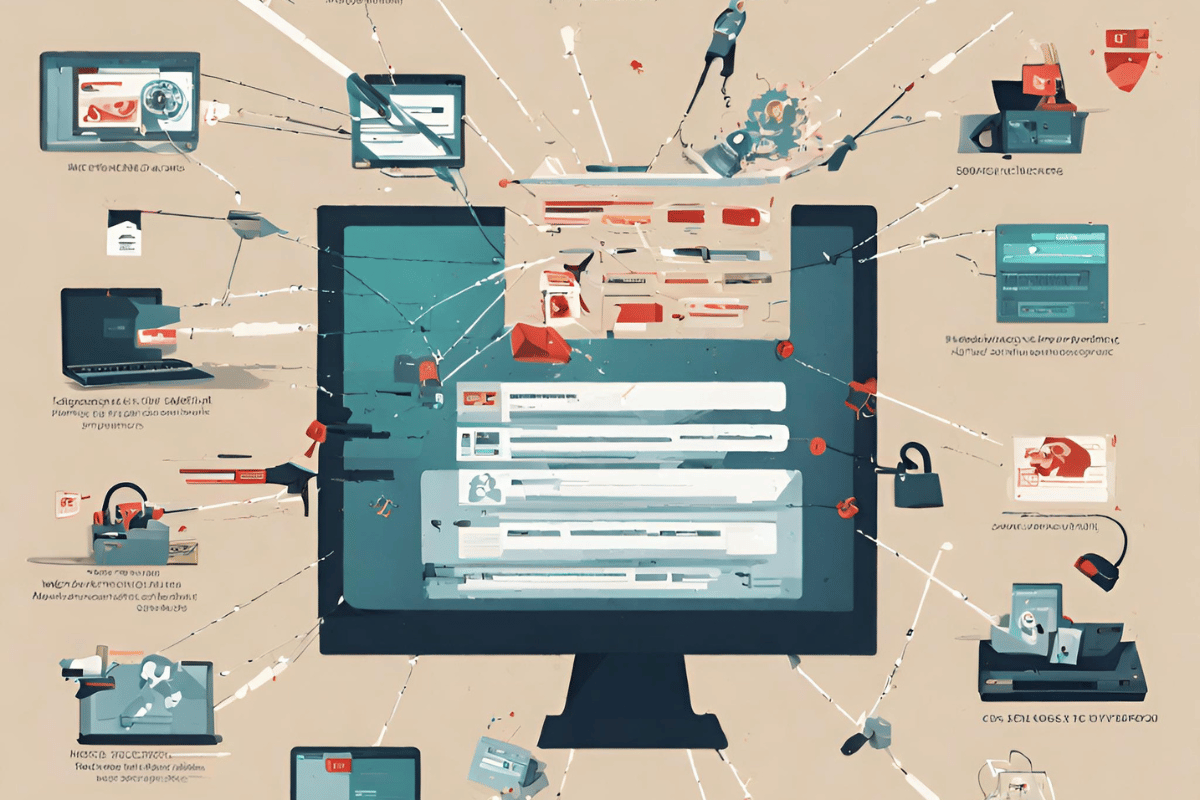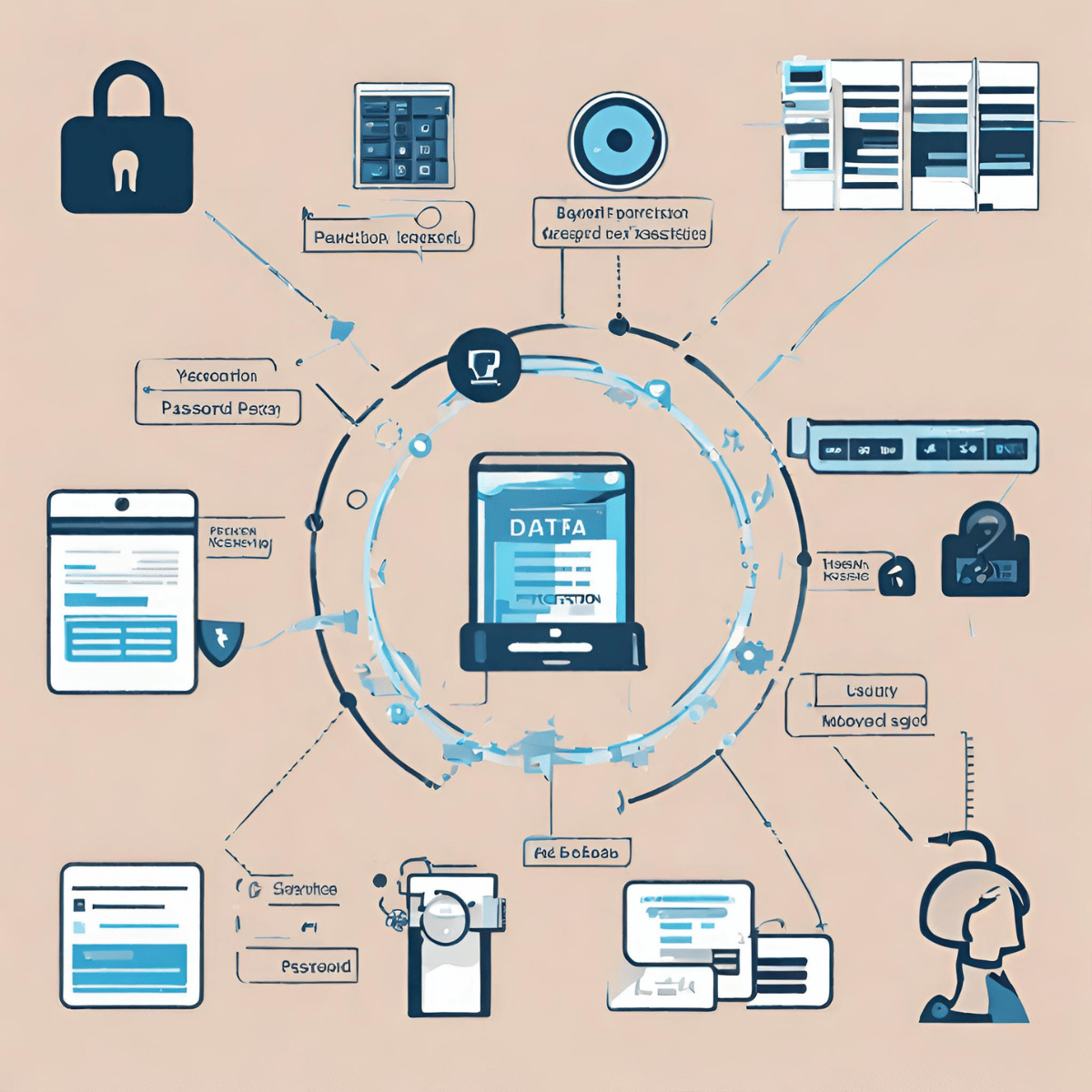There are several effective strategies to consider. Start by implementing regular automated backups, either to the cloud or an external drive, to ensure data recovery in case of a breach. Utilize encryption and password protection for sensitive files, and explore disk encryption for added security. Public Key Infrastructure (PKI) allows secure data sharing, while steganography can conceal data within other files. Secure data in transit with Internet Protocol Security (IPsec), and safeguard wireless transmissions with Wi-Fi Protected Access (WPA).
The importance of data protection from hackers:

- Preservation of Confidential Information: Data often contains sensitive and confidential information, such as personal details, financial records, and business secrets. Protecting this information is essential to prevent it from falling into the wrong hands.
- Prevention of Identity Theft: Hackers can use stolen personal data to commit identity theft, which can have severe financial and personal consequences for individuals. Data protection measures help in reducing the risk of identity theft.
- Preventing Data Extortion: Ransomware attacks, where hackers encrypt data and demand a ransom for its release, are rising. Data protection measures can prevent such extortion attempts.
- Privacy and Trust: Individuals and customers trust organizations to protect their data. Maintaining data security not only preserves trust but also helps in building a positive reputation.
- Mitigating Financial Loss: Recovering from a data breach can be costly. Implementing robust data protection measures is often more cost-effective than dealing with the aftermath of a breach.
- National Security: In cyberattacks on critical infrastructure or government systems, data protection becomes a matter of national security. Ensuring data security is essential to protect a nation’s interests.
Different types of hacking attacks:

- Phishing Attacks:
- Phishing: Cybercriminals send deceptive emails or messages to trick recipients into revealing sensitive information, such as login credentials or financial details.
- Spear Phishing: A targeted form of phishing where attackers tailor their messages to a specific individual or organization, often using personal information to increase credibility.
- Whaling: Targeting high-profile individuals, such as CEOs or government officials, for phishing attacks.
- Malware Attacks:
- Viruses: Malicious software that attaches itself to legitimate programs and spreads when the infected program is executed.
- Trojans: Programs that appear legitimate but have hidden malicious functions, allowing unauthorized access or control of a victim’s computer.
- Ransomware: Encrypts a victim’s files or entire system, demanding a ransom for the decryption key.
- Spyware: Gathers information about a user or organization without their knowledge, often for malicious purposes.
- Adware: Displays unwanted advertisements, often bundled with legitimate software.
- Denial-of-Service (DoS) and Distributed Denial-of-Service (DDoS) Attacks:
- DoS Attack: Overwhelms a target server or network with excessive traffic, causing it to become unavailable to users.
- DDoS Attack: Uses a network of compromised devices (a botnet) to flood a target with traffic, making it difficult to mitigate.
- Man-in-the-Middle (MitM) Attacks:
- Eavesdropping: Attackers intercept and eavesdrop on communications between two parties without their knowledge.
- Session Hijacking: Attackers take control of an active session between two parties, often to impersonate one of them.
- SSL Stripping: Forcing a downgrade from an encrypted (HTTPS) connection to an unencrypted one (HTTP), allowing attackers to intercept data.
- SQL Injection:
- Attackers inject malicious SQL queries into input fields, exploiting vulnerabilities in a website’s database to retrieve or modify data.
- IoT (Internet of Things) Exploitation:
- Hackers target vulnerable IoT devices, such as smart cameras or thermostats, to gain control or create botnets for further attacks.
Different Ways To Protect Data From Hackers:

1. Quick and Regular Backup
One of the fundamental steps in data protection is regular backup. Many users fail to back up their data at regular intervals. Data accumulates over time, and the frequency of your backups should reflect the value of the information you can afford to lose in a system crash.
Consider setting up automatic backups during your downtime to make the process more convenient. This way, your data is securely transferred to cloud storage while you sleep, saving you time, effort, and potentially costly data recovery services.
2. Cloud Security Software
Cloud security software can offer peace of mind for those who remain skeptical about storing sensitive data on the cloud. These tools allow you to password-protect your cloud accounts, adding an extra layer of security to your stored data.
3. Utilize Share Level Protection and File-Level Security
Set permissions for specific files and folders to prevent unauthorized access to your data. This approach works effectively when your data is stored on network shares. In Windows, you can configure permissions by accessing the ‘permissions’ button on the sharing tab. It’s important to note that these permissions may not apply to local system users with physical data access.
4. Password Protect Documents
Protecting individual files and photos is crucial. You have two password-protection options: using built-in security features or third-party software. While the built-in option is more straightforward, third-party software may offer enhanced security features at a cost. Before investing in third-party software, take advantage of trial periods to evaluate their effectiveness.
5. Encryption for Enhanced Security
Encryption provides robust data security by rendering files and folders unreadable to unauthorized users. Even if a hacker breaches your encryption software’s security, they would find the data inside to be in an unreadable format. The key difference between encryption and basic password protection is the level of security offered. AES-256-bit encryption is considered unbreakable to date, making it the preferred choice for data encryption.
6. Use Disk Encryption
Consider encrypting entire drives and disks to protect the contents comprehensively. Disk encryption ensures that data is automatically encrypted when written to the hard disk and decrypted when loaded into memory. This method is particularly useful for safeguarding portable drives and USB drives.
7. Public Key Infrastructure (PKI)
PKI involves managing private and public key pairs along with digital certificates. These certificates and keys are issued by trusted third parties, making them secure. You can securely share information with others using encryption methods and public keys. To decrypt the data, the recipient must possess the private key corresponding to the public key used for encryption.
8. Protect Data Using Steganography
Steganography allows you to hide one piece of data within another. For example, you can hide a private message within an audio or image file. While steganography alone doesn’t encrypt the data, it is often used with encryption software to add an extra layer of security.
9. Use IP Security to Secure Data in Transit
When data is in transit, it can be vulnerable to interception by snoops and intruders. IPsec, or Internet Protocol Security, helps protect data during transmission. Both sending and receiving systems must support IPsec for it to work effectively. IPsec uses ESP (Encapsulating Security Payload) to encrypt data for added security.
10. Protected Wireless Transmissions
Data shared over wireless networks is more susceptible to interception than wired Ethernet connections. Ensure your wireless network uses encryption, with WPA (Wi-Fi Protected Access) being a more secure option than WEP (Wired Equivalent Privacy).
11. Take Control Using Rights Management
Rights management services enable you to monitor and control how others interact with shared files. You can restrict actions like editing, ensuring that shared files remain view-only. This control helps protect your data from unauthorized modifications.
12. Shred Files You No Longer Need
File shredding is an essential feature to maintain data security. It allows you to delete files you no longer need securely. File shredding software can be a valuable addition, as it ensures that deleted data cannot be easily recovered.
Conclusion
Data protection is of utmost importance in our digital age. Implementing a combination of these data security measures can significantly reduce the risk of data breaches and loss. Consider starting with encryption software and regular backups, and for added security, explore other options like cloud security software and steganography.
FAQs:
What is the most secure method of data encryption?
AES-256-bit encryption is widely considered the most secure encryption method available to date. It provides robust protection for your data.
How often should I back up my data?
The frequency of data backups depends on how much data you can lose in a system crash. Regular automatic backups, such as during sleep hours, are practical solutions.
Do I need third-party encryption software, or are built-in options sufficient?
Built-in encryption options can provide basic security, but third-party encryption software often offers more advanced features and stronger protection. Consider your specific security needs when choosing.
What is steganography, and how does it work?
Steganography is a method of hiding one piece of data within another. For example, it can hide a private message within an image file. It is often used in conjunction with encryption to add an extra layer of security.
How can I educate my employees about data security?
To educate your employees about data security, invest in training programs, workshops, and resources that cover the latest cybersecurity threats and best practices. Make sure your team is well-informed to protect your organization’s data.
